With all the rain in the forecast, we wanted to take a minute and visit an issue which seems to plague area trails every spring – soggy trail conditions. Don’t get us wrong, we love tacky dirt as much as anyone, however there is a fine line between brown pow, and wet or muddy trail. Simply, if mud or wet trail is sticking to your shoe or tire, you should turn around. Also, when you encounter a muddy patch, don’t assume the rest of the trail will be any better. More often than not, it only gets worse and you should quit while you’re still ahead.
First off, it’s important to realize, that not all dirt is equal. In regions such as the pacific northwest, wet trail conditions are common and accepted as part of the sport. Whereas, in Utah’s sub-humid climate, the same conditions can have fairly drastic consequences for the trail and your bike. Secondly, the time of year as well as exposure and elevation will effect how moisture and precipitation impact a trail. Throughout the spring thaw, trails tend to be more saturated and hold more water, taking days to dry out after rain, as opposed to later in the summer and fall where an evening thunderstorm will leave them riding nice and tacky the next morning.
With that said, we understand that shit happens. Through either bad circumstance, or poor judgement, we’ve all found ourselves in situations and on trails we shouldn’t have been on. We’re not here to place blame, or be trail nazis, but simply to spread awareness and encourage everyone to be considerate trail users. After all, these are our trails, paid for largely by our tax dollars, donations, and volunteer labor. It’s up to us to protect and sustain them for years to come.
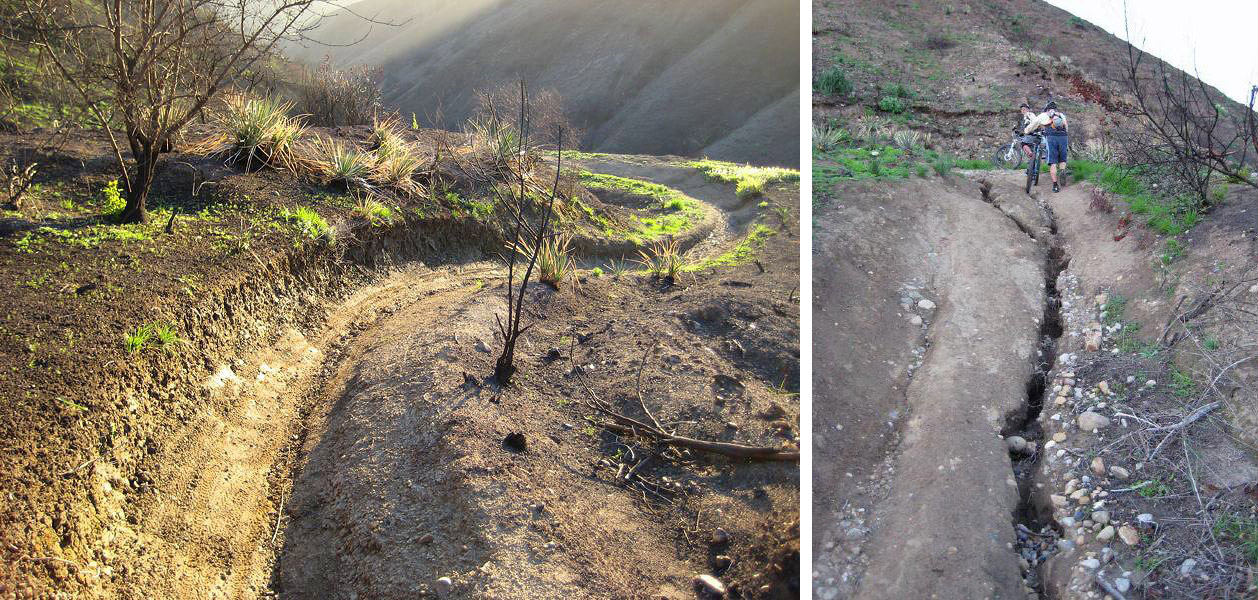
Above: Note the vertical channel in the center of this perfectly bermy trail on the left. If not corrected, this will only worsen leading to massive ruts which make the trail unrideable as shown in the photo on the right.
Image Courtesy Bike List
Trail Threat #1 : Ruts & Erosion
One response we commonly hear regarding riding wet trails is “they fix themselves” and “mountain bikes have plenty of suspension to deal with trail damage.” No and no. Trail damage and erosion that occurs over time from proper use is a different beast than that which occurs as a result of abuse. Once a rut is formed, it is only aggravated by further travel and water, requiring hours of labor to correct. Also, those berms and flow we crave so much are no match for running water which takes the path of least resistance. Ruts create low spots trapping moisture that would otherwise run off the slope, further deepening over time forming mini canals that are perfect for grabbing your front tire and throwing you over the bars. Want your trails looking like the Grand Canyon? Neither do we.
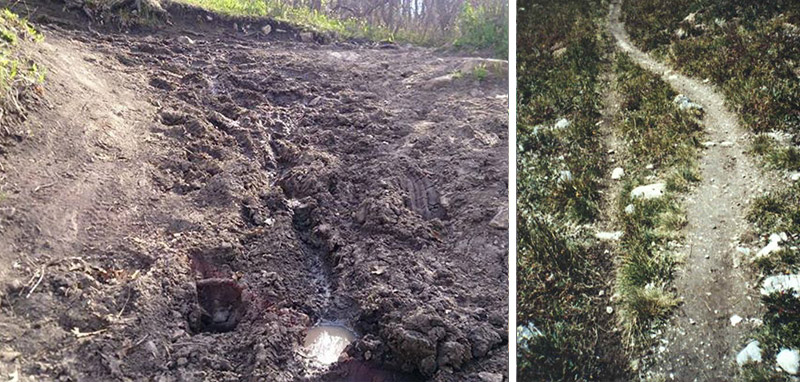
Above: On the left, you can see the damage caused from people walking around muddy spots. What started as a singetrack trail, has now been widened from improper use. On the right, you can see the beginnings of trail widening. Over time, these two paths will merge and lead to further slope and trail erosion, eventually making the trail impassable. Remember to keep singletrack single.
Threat #2 : Widening the Trail
When trails are wet, and ruts start to form, naturally people tend to ride around them, hence widening the singletrack path. One of the arguments against allowing mountain bikers access to trails is the damage they do to sensitive environments. In reality, when bikes are on a defined path, they cause very little impact. It’s only when riders start cutting corners, riding around wet spots, and forging their own path that such damage occurs. Keep singletrack single, and when you encounter wet bits of trail, please consider the potential consequences of walking around the mud. This is vital not only for trail sustainability, but for ensuring our access as mountain bikers to trails for years to come.
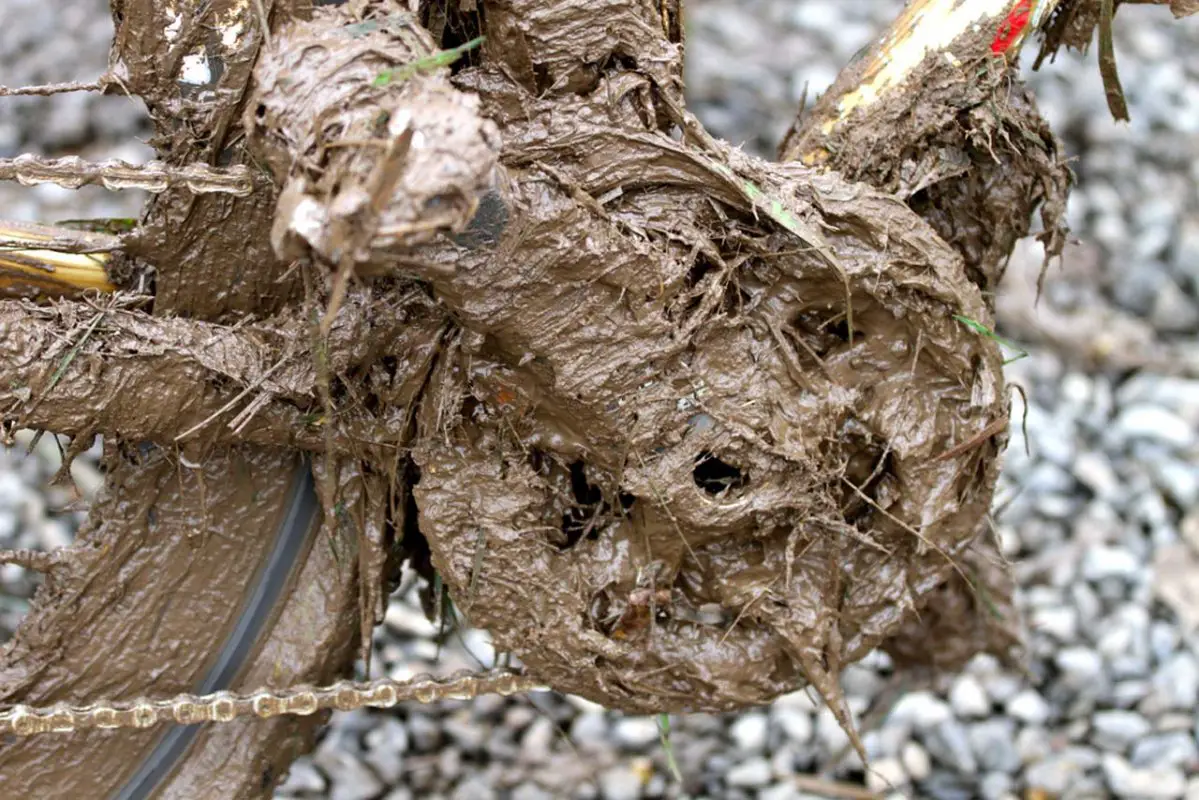
Above: Riding in wet and muddy conditions not only destroys trails, but murders drivetrains. Unless you like shelling out an extra couple hundred bucks for new brake pads, chain, and seals, as well as want to spend your Saturday cleaning every nook and cranny on your bike instead of riding, stay off muddy trails and plan for the weather! Trust us, we’ve been there before and it sucks.
Threat #3 : Bike Damage
While this has less to do with the trail, it should just as likely influence your decision making process. There is no quicker way to ruin your drivetrain, brake pads, as well as shock, fork, and bearing seals than gunnking them up with Utah’s finest clay. The sandy soils common to the area can quickly turn into a reddish/brown glue-like paste that finds it’s way into every crevice on your bike. While the above photo may seem drastic, it’s amazing how fast mud can compound, leaving your bike unrideable and 20 lbs heavier as you carry it back to the car.
With that said, we know asking everyone to wait until all trails are 100% dry before venturing out is about as effective as abstinence only education. No one likes being told what to do, especially in nature, however, we do ask that you take responsibility for your actions and consider the potential impact you are having now and down the road. Think about it this way: the more time our trail crews have to spend repairing trails, the less time and effort they can allocate towards new and improved trails.
Furthermore, there are a number of tools available to keep you informed as to what’s rideable. We do our best to keep the site updated, as well as share trail reports across our social media channels including Facebook, Twitter, & Instagram. Basin Recreation does an excellent job at maintaining their trail conditions spreadsheet. Additionally, the Utah Mt Biking Trail Network Facebook page as well as the Mountain Trails Foundation Facebook page can be good resources for real-time trail conditions.
Happy trails, and remember to keep singletrack single!

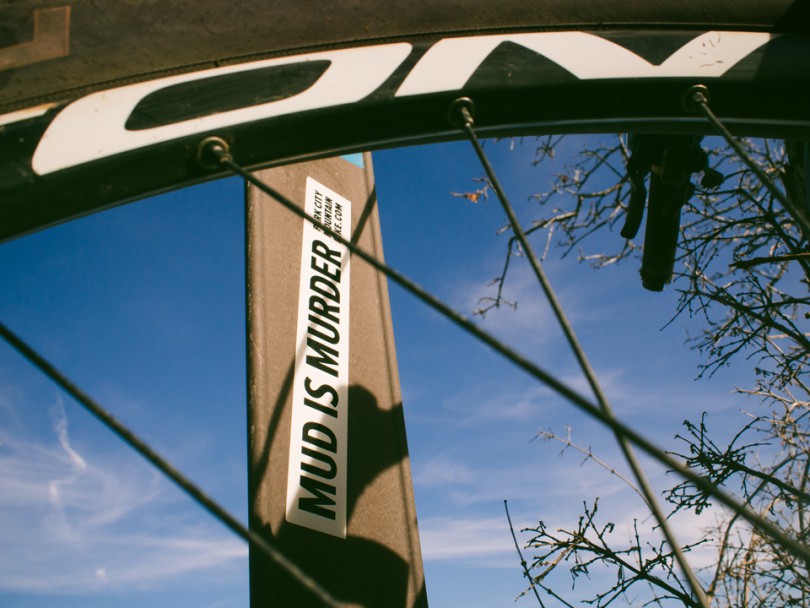
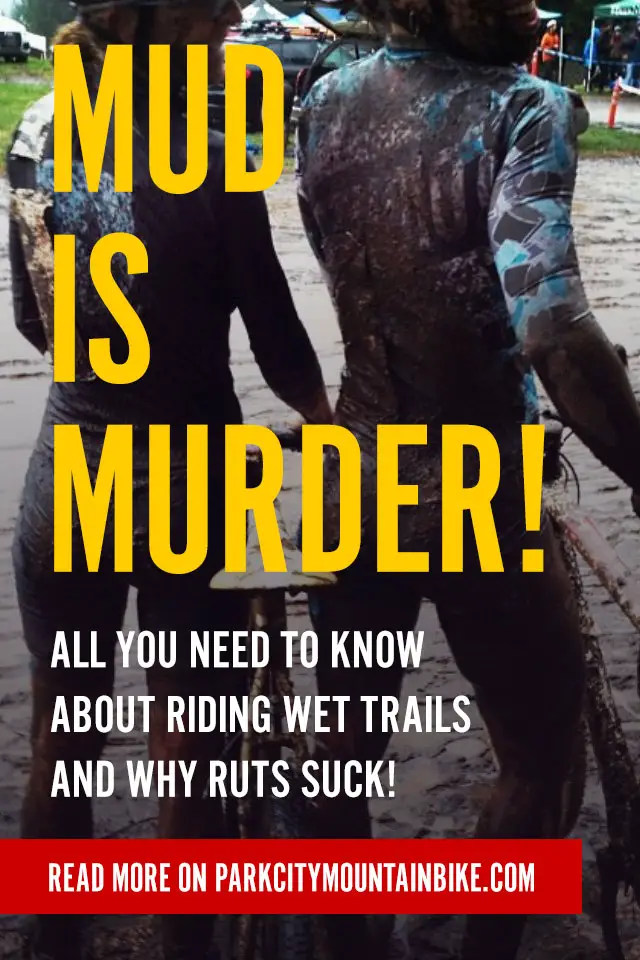

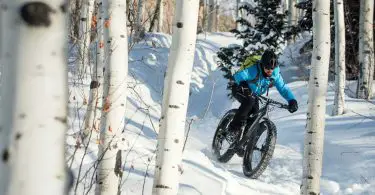

Excellent Article! Thanks, now if we can just get this message handed out with every MTB purchase at shops 😉
Q: Can a rider repair a rut while the trail is still wet or do you need to wait until the trail dries before attempting to repair mud rut damage?
Yes, riders can get off the bike & walk down the ruts when still soft. On the clay type soils, this works well as waiting for it to dry makes it hard to smooth. We have “gumbo clay” soil here on the gulf coast & have “stomp parties” often.
makes sense Booker – thanks
Wet weather is really good for doing trail work, because you can see where the water is going & what it’s doing, and you can then build the trail to handle it.
Usually, repairing a rut at the site is a very temporary fix. The rut is likely the result of water drainage issues up or down trail. Ideally the larger drainage issue gets addressed to prevent the rut from re-forming.
Jenny, you are beautiful!!!
After 20 years I have noticed that is mostly true.
The exceptions create the rule. It is not possible to make a perfectly flat downhill angled surface, This is shovel packed dirt not laser etched glass. Water can accumulate in irregularities . When the weight of a 30 pound bicycle topped with a 160 pound rider runs a 2 square inch patch of abrasive rubber through a “wet spot” the earth is moved aside. Man has been moving Mountains for centuries, now I expect women are also moving mountains!
Stay away from the puddles. Puddles are reserved for 9 year olds who have to go to the school bus in the morning!
Super diplomatic way to handle this touchy subject….without getting overly complicated….some trails turn to trash the minute it starts to rain (the ones with bentonite clay come to mind) and others can be ridden 24/7/365.
It might be good to start classifying trails into categories in addition to skill level. Trails are fairly static. They are in the same place, make the same turns, same elevation etc. every time you ride them. The weather makes the trail conditions dynamic.
Not all trails are created equal. How weather changes trail conditions is something the really good trail builders take into consideration. Some trails can be ridden in any weather if the rider is up for it. In fact I know of several trails that get better when they are ridden wet. So what is my point, you might be saying.
A durability classification would help those less informed riders make better decisions on questionable days. Most trails can be put into one of three categories. Keep it simple with three ratings……delicate (those trails that cannot be ridden in anything less than ideal conditions without falling apart) standard (trails that can be ridden in many conditions with minimal damage) bulletproof (trails that can be ridden in all conditions with little if any damage). So Jane and Joe super gnarly mountain bike couple of the year want to go riding on a warm (relatively) snowy/rainy day. They go to one of the many digital trail guides for the area they want to ride and there is a filter so you can see only the bulletproof trails…..take out the guess work and keep the trails buff….its pretty easy really.
Brilliant. I’ve been preaching something similar for years. I avoid trails that suck when wet so I can ride the stuff that just gets more challenging (think rocks and roots) without getting trashed.
Having lived in the SLC/PC area, and now living in the Pacific NW, I can truly say that the type of dirt is a huge key. Couple that with carefully considered, sustainable trail building and the Pacific NW is rideable, almost year round. Of course, the type of soil in Utah is dramatically different and has consequences when it gets rather wet.
I have no interest in riding wet/muddy trails out here in NorCal. The mud sticks to everything and makes a mess of my bike and the trails themselves. Fortunately, I live in a place where there are lots of country roads and I often switch to the road when the trails need a break. Wherever you ride, do so safely and conscientiously. PL
Yesterday I headed to the west end of the Utah valley to Eagle Mountain. There is had rained about an inch over night, but the soil there is very rocky. The trails were moist but didn’t deform under my tires. The thing to do is know your trails. I would never ride corner canyon after a rain storm because the soil there can’t take it, but eagle mountain is a whole other story.
Hello Park City Mnt Bikers,
I’m from City of Fort Collins, Colorado and we love your article about riding wet trails, but being a government agency, we can’t to link to it due to its language. I took a stab at rewording it and making it Northern Colorado specific. May we have permission to publish this adapted version (with credit to you of course)?
Thanks!
Zoe Shark
City of Fort Collins Natural Areas Department
wet condition in the UK is so common that there is hardly a day when the condition is dry, so most British riders and hikers have gotten used to the fact that wet is fine as long as it is not soaking wet.
I have noticed that rocky trails are best for wet conditions. They mimic the gravel rural houses use to pave their entrances. The smaller the rocks the better. There is an old mine railroad bed in the area near where I live. The dirt and stone of the 100 year and abandoned railroad bed is never “muddy”.
May I have permission for the Girdwood Trails Committee to submit this blog to our community newspaper (Girdwood Gazette) for our monthly trails submission? Thank you.
Brian Burnett
Vice Chair-Girdwood Trails Committee
burntski@gmail.com
Hi Brian, You can submit as long as the following criteria are met:
I think skidding is more of an issue than mud